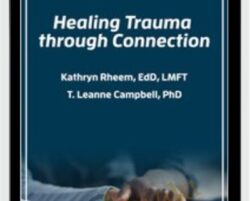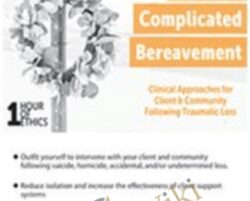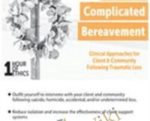Journeying through the Canyon of WhyEarly in my career I met individuals and families who had experienced loss from profound and complicated causes of deaths including suicide, homicide, accidental and ambiguous losses. Most of them had already tried to get help from one or more grief support resources in the community without success. As both a Certified Thanatologist and a Forensic Suicidologist, I was concerned for the lack of understanding these clients were experiencing.I have spent the last thirty years befriending this grief process and learning the techniques that clients find helpful. Working with grief responses following both man-made and natural causes of death has equipped me to offer a pathway for others to more effectively help the newly bereaved recover quicker.In this recording, I will share what has helped clients, both in the United States and internationally to heal from that universal experience we refer to as sudden and traumatic loss. I will help you fill your therapeutic backpack with essential clinical strategies you can implement that will guide you and your clients safely through the journey of complicated grief.Implement crisis theory for understanding where your client is when you first meetExlore a simple metaphor to create a four part coping measure for client and caregiver self-inventoryAnalyze the benefits of teaching clients to communicate through the use of metaphors to increase their formal and informal support systemsEstablish a listening and communicating approach that brings core feelings to the surface so clients can deal with the core emotional components of their griefCommunicate the challenges grief has in a society not supportive of public expression of what is being experiencedAnticipate ethical conflicts that occur when confronted by grief that create a risk for countertransferenceDEVELOPMENT AND RESOLUTION OF A CRISISHow Crisis Theory is a guide to understanding your client’s loss journeyThe self-defined nature of crisis development in the face of lossThe ‘contributaries’ that facilitate complicated griefThe role of maladaptive copingThe role of alcohol and substance abuse (prescription and recreational)Risk factors for clients who are coping with complex causes of death and how to lower their risksEquipment to help the bereaved take charge of their Journey:Understand how their loss has unfolded into defining momentsSteps that lead to Post-Traumatic Growth rather than pathological griefIdentify thoughts of suicide and suicidal ambivalence and develop a plan to reduce riskSelf-care exercises for clinician and clientPREPARING TO TREAT SUDDEN AND TRAUMATIC LOSSThe most common type of sudden and traumatic loss faced by communitiesThe impact of sudden and traumatic loss on:Children (including impact on child development)Families and the potential for long-term negative consequencesCommunityEquipment to:Identify and assist those who need additional treatmentRefer (available resources and evidence-based practices)Provide treatment and support initially and through life milestonesEthical conflicts that create a risk for countertransferenceSUDDEN AND TRAUMATIC LOSS: TOOLS FOR HEALINGHow metaphors canAid in the initial assessment of the client’s statusBenefit the client and therapist in the treatment of traumatic lossProvide an understanding of the complexities of the traumatic loss and grief processExamples of metaphors used by clientsTraining clients to use metaphors activate their informal support systemThe Active Postvention ModelHistory of the LOSS Team ConceptPreparing your community to activate the LOSS Team modelThe role of the Loss Team first responders in the initial and overall treatment of traumatic lossELICITING COMMUNICATION WITH CORE FEELINGS TO SUPPORT CONGRUENCYThe benefits of going back to the basicsWhy the language of grief requires congruent feelings to be expressedPsycho-Educational InterventionHow substitution of thoughts has complicated clear communication between the bereaved and their informal caregivers.How clients can become more clear in communicating their needsImplementing psychoeducational interventions in your grief practiceEquipment for:Overcoming obstacles to hearing the emotions below the content of a client’s grief communicationOvercoming challenges to implementing strategies for clear communicationTag: Treating Complicated Bereavement: Clinical Approaches for Client & Community Following Traumatic Loss – Frank R. Campbell Review. Treating Complicated Bereavement: Clinical Approaches for Client & Community Following Traumatic Loss – Frank R. Campbell download. Treating Complicated Bereavement: Clinical Approaches for Client & Community Following Traumatic Loss – Frank R. Campbell discount.
 Healing Trauma through Connection – Kathryn Rheem & Leanne Campbell
₹3,818.00
Healing Trauma through Connection – Kathryn Rheem & Leanne Campbell
₹3,818.00
 Vitamin Cure for Infant and Toddler Health Problems – Andrew W. Saul & Ralph Campbell
₹2,490.00
Vitamin Cure for Infant and Toddler Health Problems – Andrew W. Saul & Ralph Campbell
₹2,490.00
Treating Complicated Bereavement: Clinical Approaches for Client & Community Following Traumatic Loss – Frank R. Campbell
₹12,616.00





